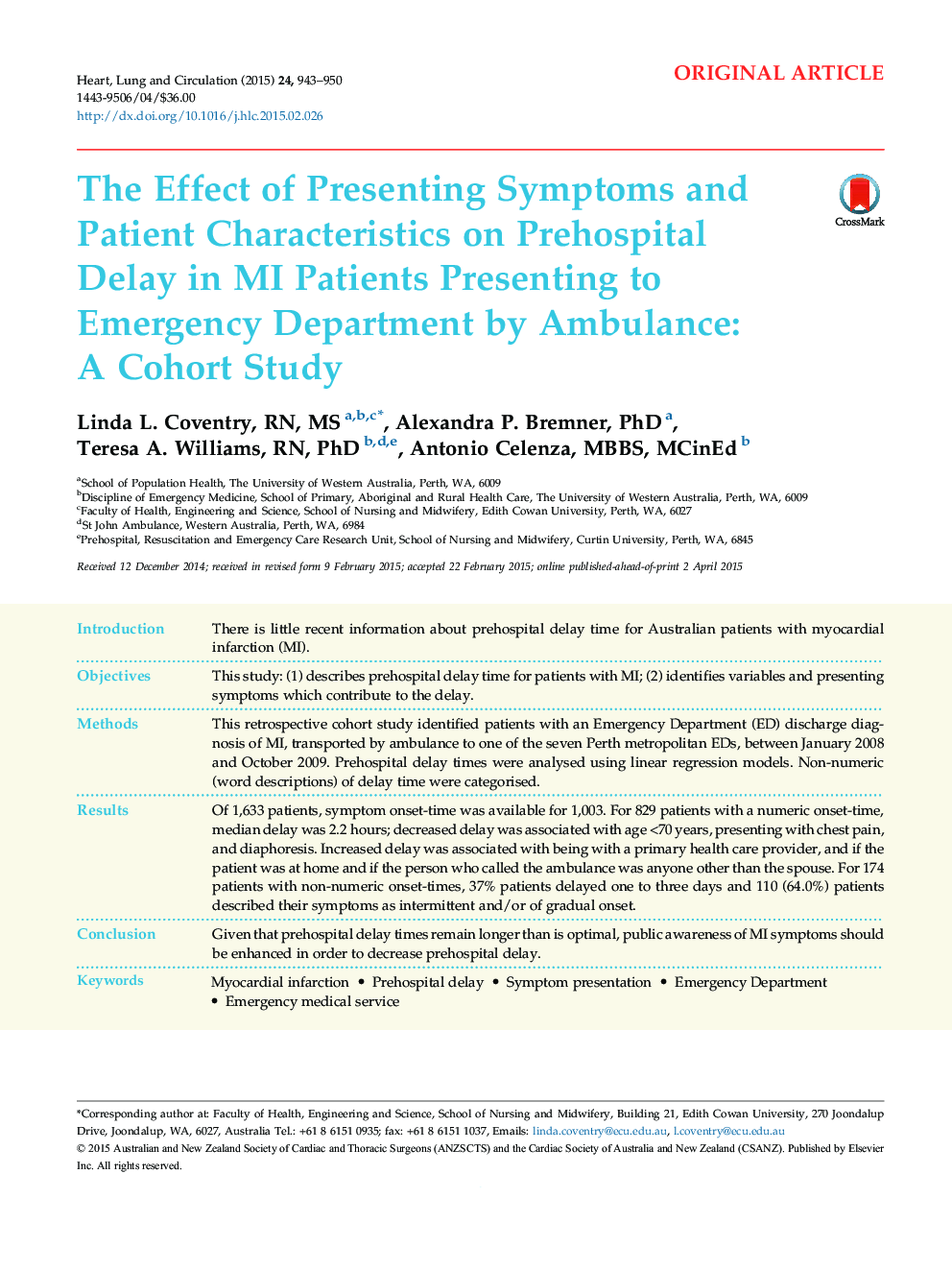| Article ID | Journal | Published Year | Pages | File Type |
|---|---|---|---|---|
| 2917718 | Heart, Lung and Circulation | 2015 | 8 Pages |
IntroductionThere is little recent information about prehospital delay time for Australian patients with myocardial infarction (MI).ObjectivesThis study: (1) describes prehospital delay time for patients with MI; (2) identifies variables and presenting symptoms which contribute to the delay.MethodsThis retrospective cohort study identified patients with an Emergency Department (ED) discharge diagnosis of MI, transported by ambulance to one of the seven Perth metropolitan EDs, between January 2008 and October 2009. Prehospital delay times were analysed using linear regression models. Non-numeric (word descriptions) of delay time were categorised.ResultsOf 1,633 patients, symptom onset-time was available for 1,003. For 829 patients with a numeric onset-time, median delay was 2.2 hours; decreased delay was associated with age <70 years, presenting with chest pain, and diaphoresis. Increased delay was associated with being with a primary health care provider, and if the patient was at home and if the person who called the ambulance was anyone other than the spouse. For 174 patients with non-numeric onset-times, 37% patients delayed one to three days and 110 (64.0%) patients described their symptoms as intermittent and/or of gradual onset.ConclusionGiven that prehospital delay times remain longer than is optimal, public awareness of MI symptoms should be enhanced in order to decrease prehospital delay.
